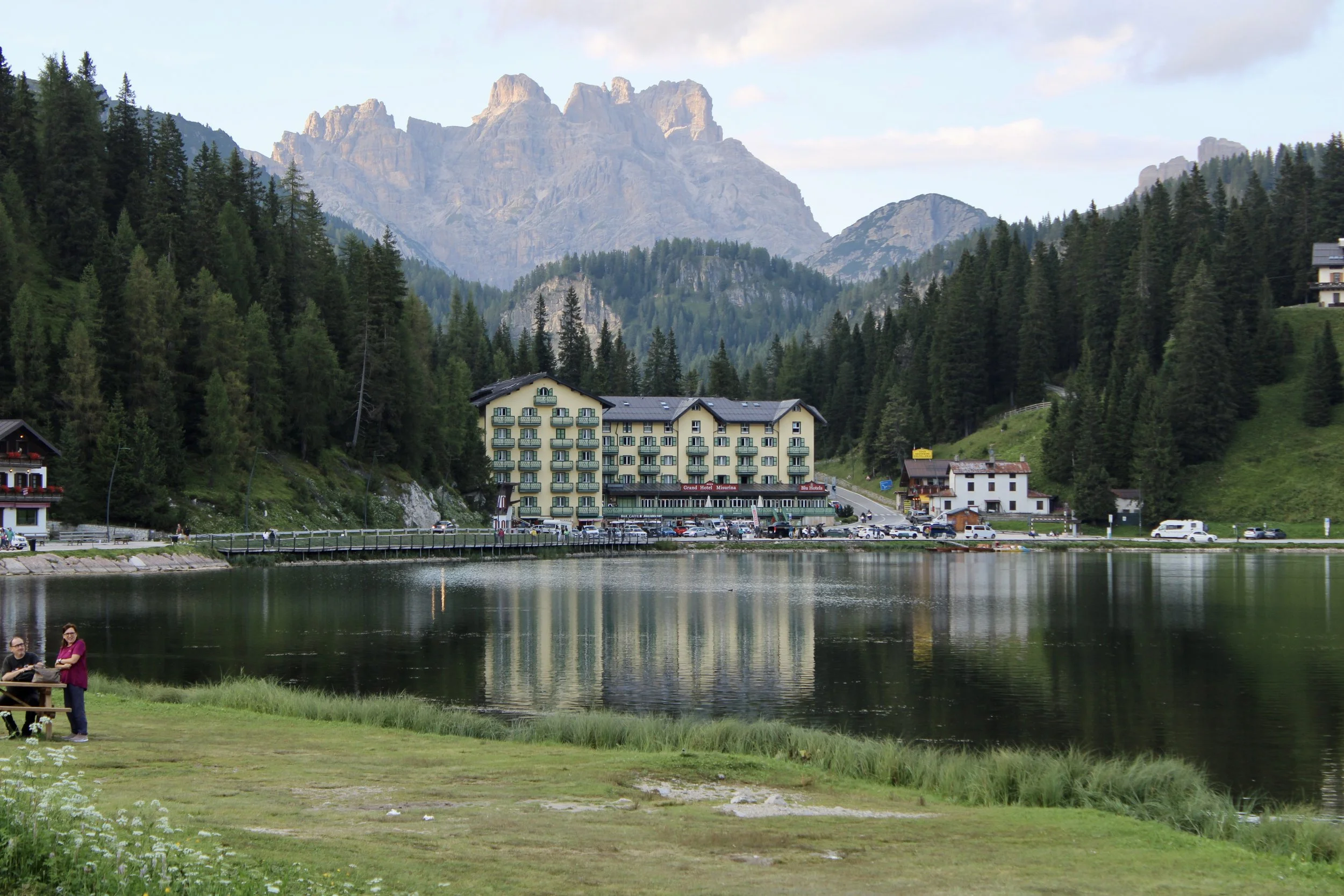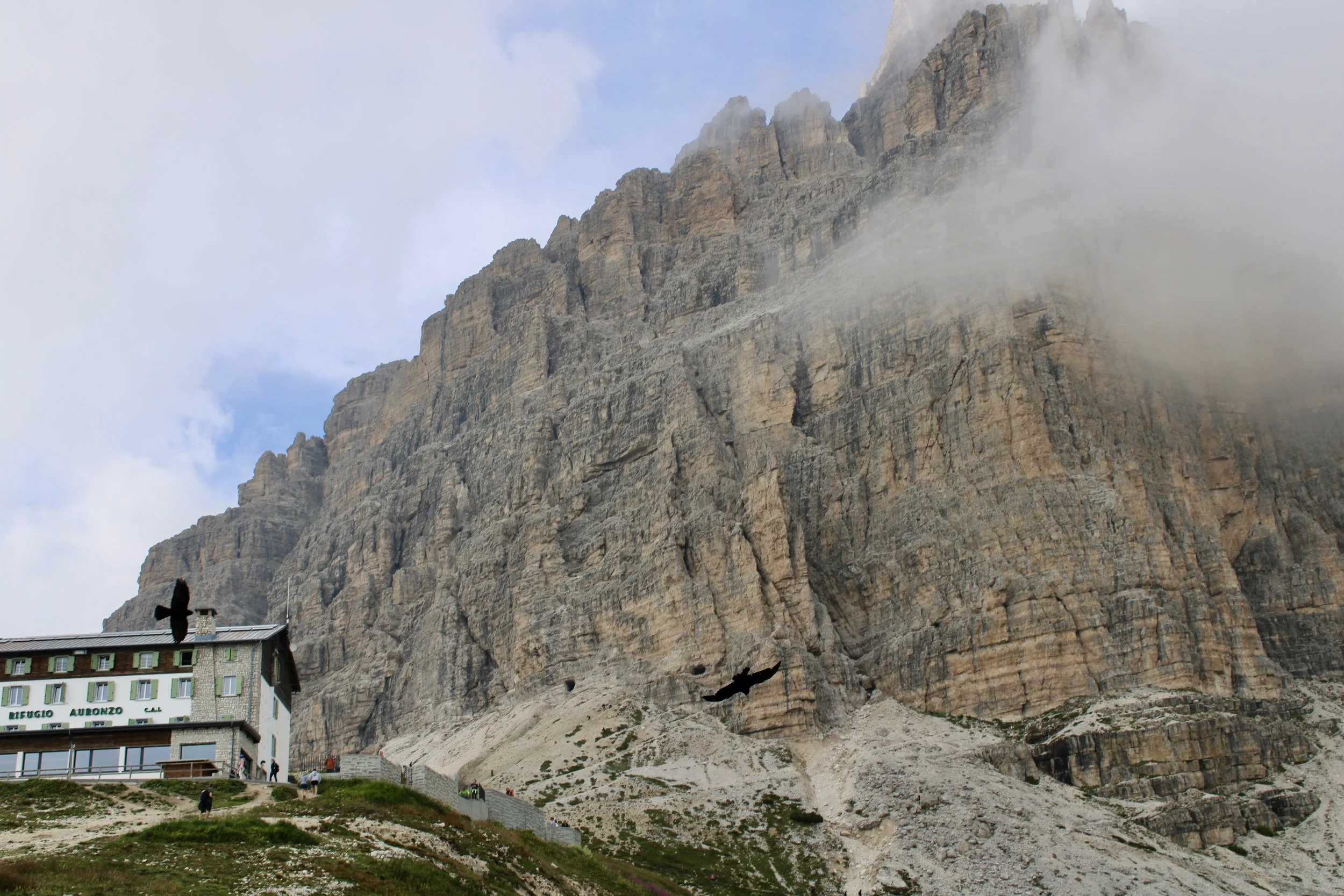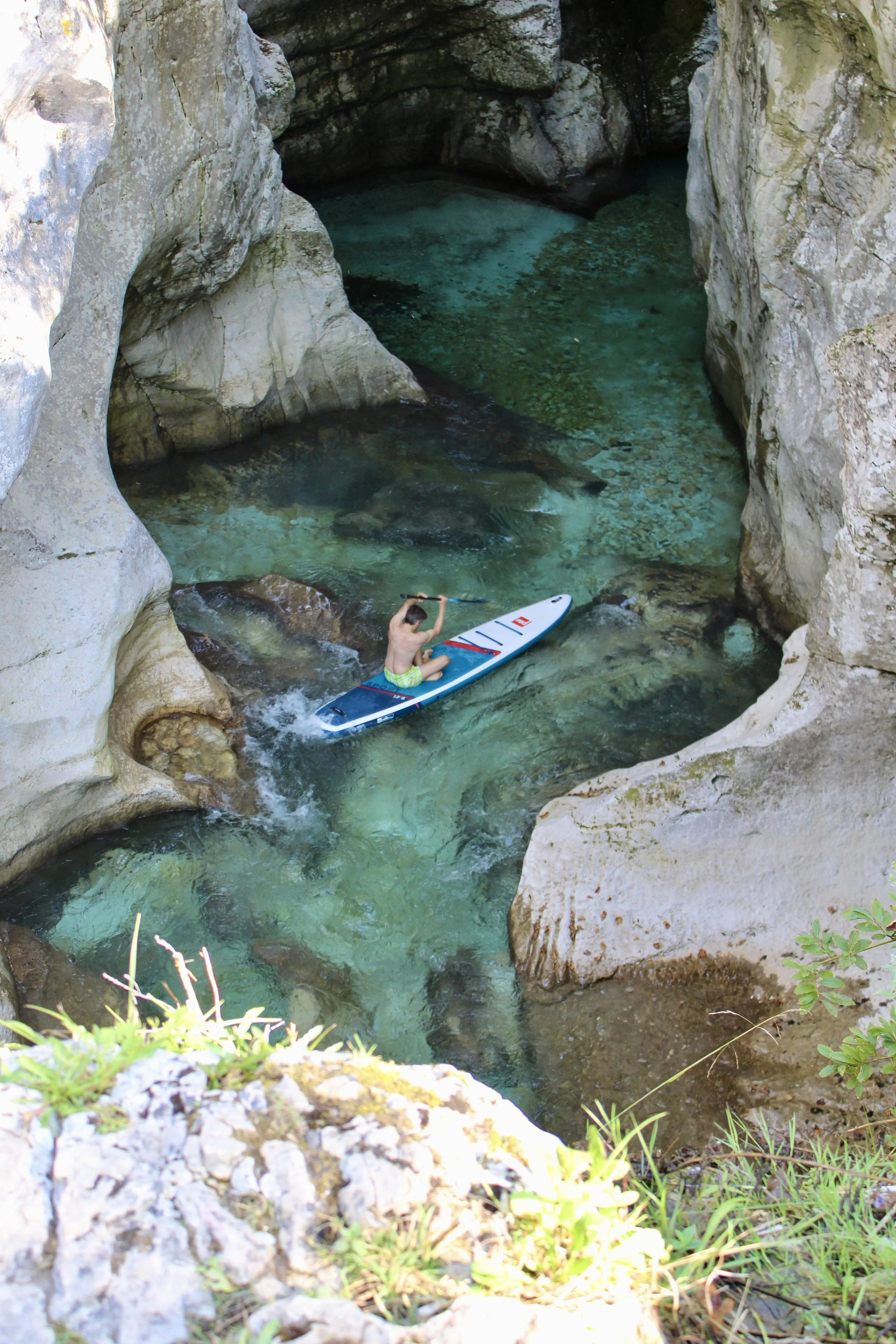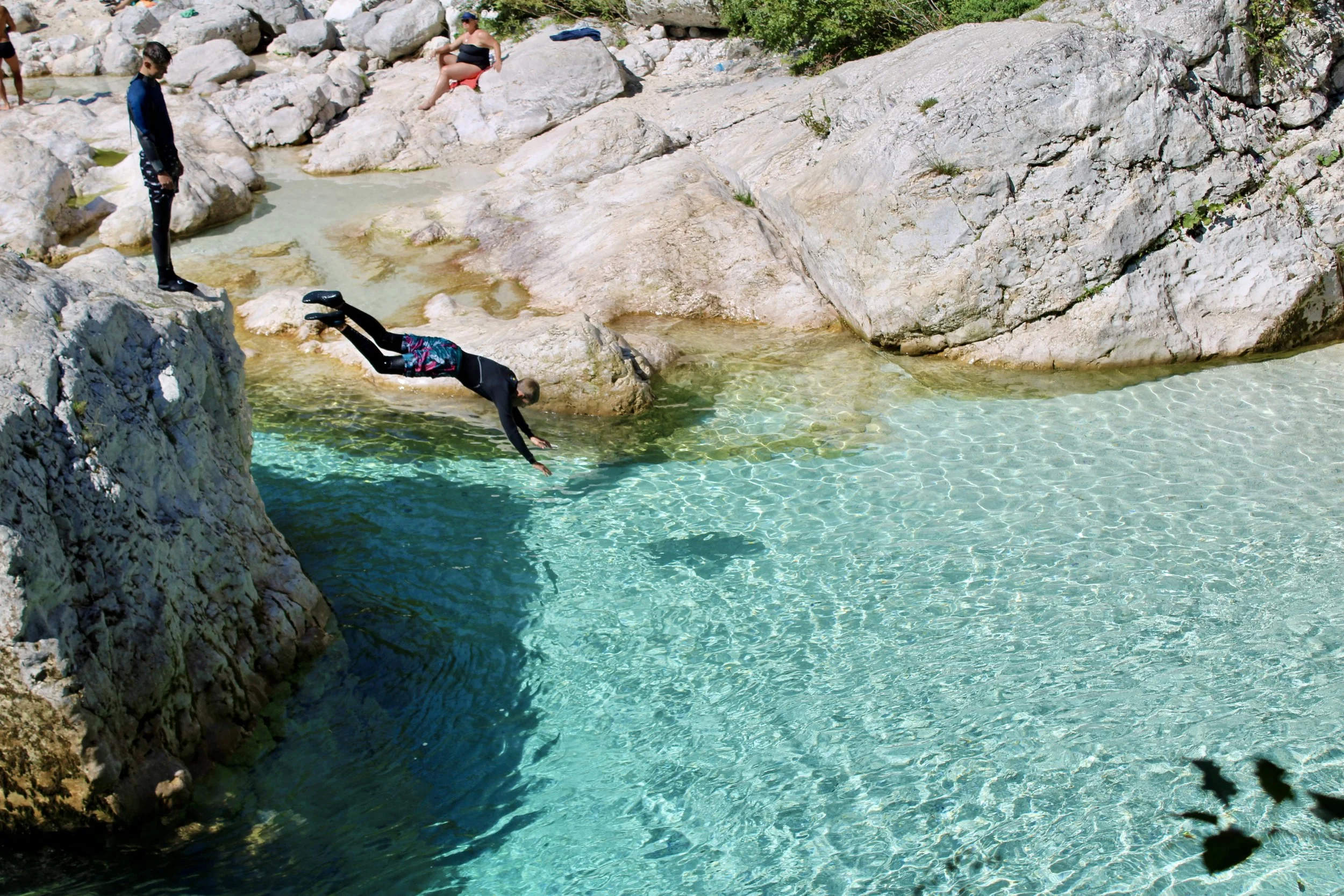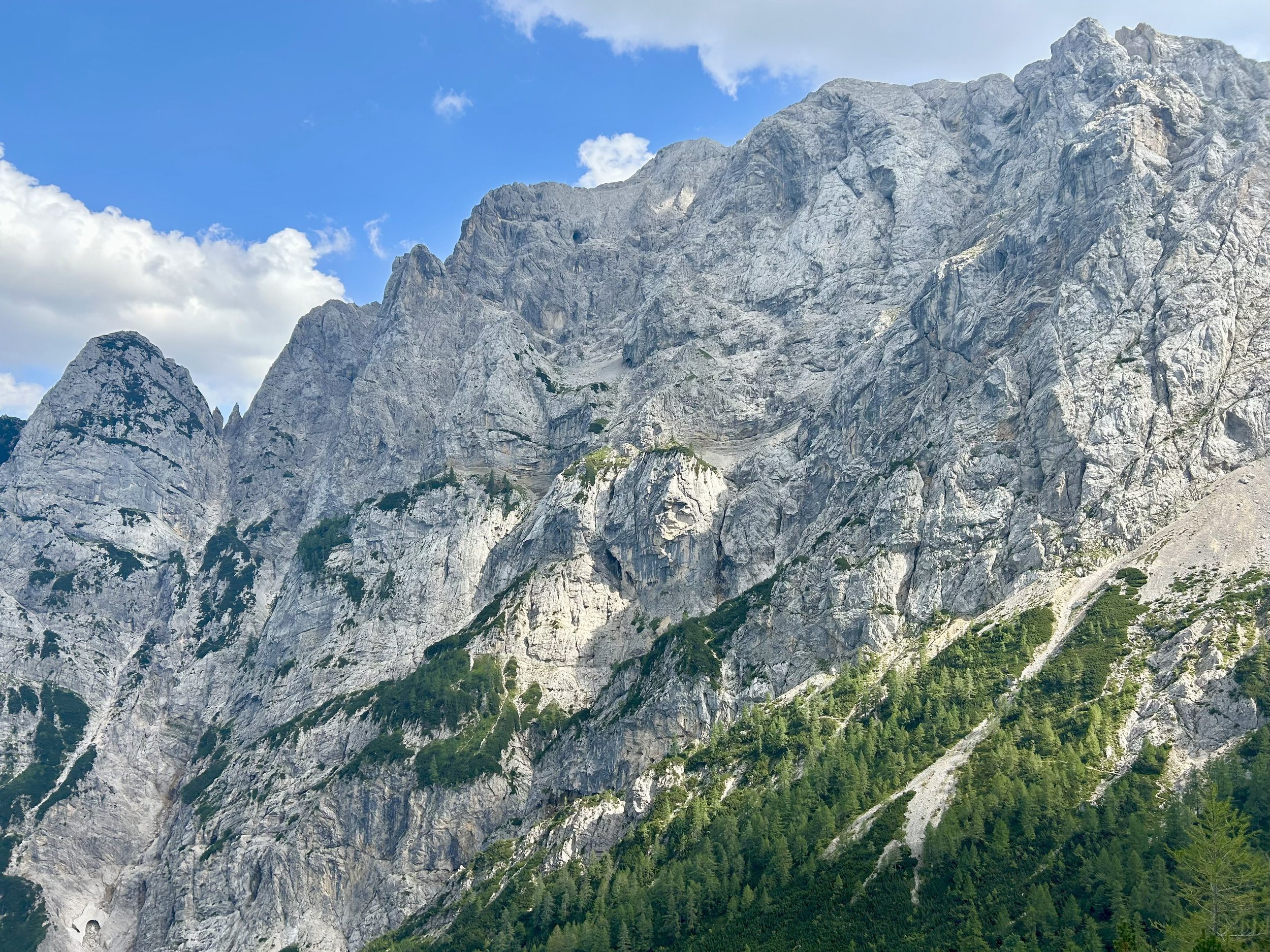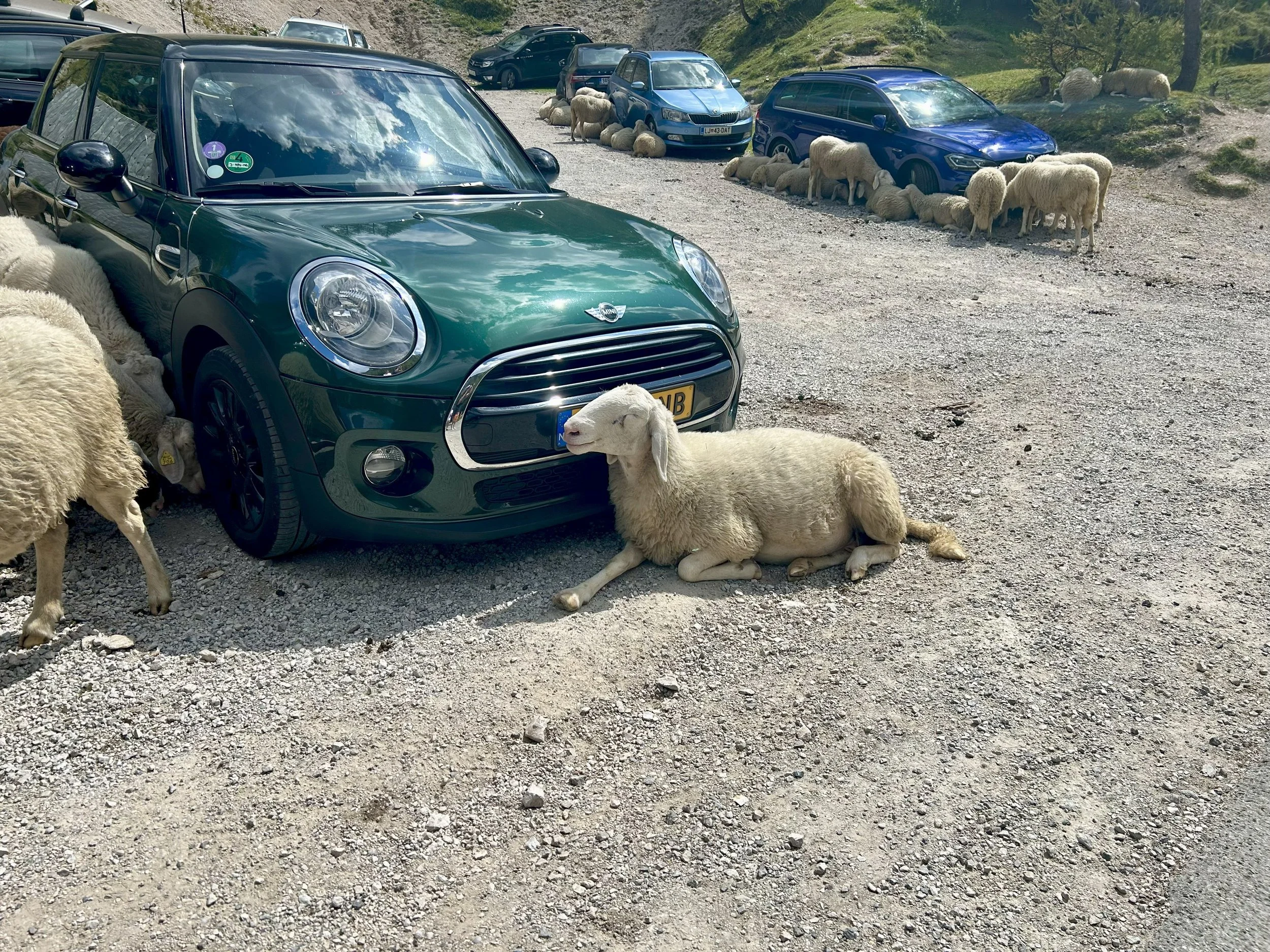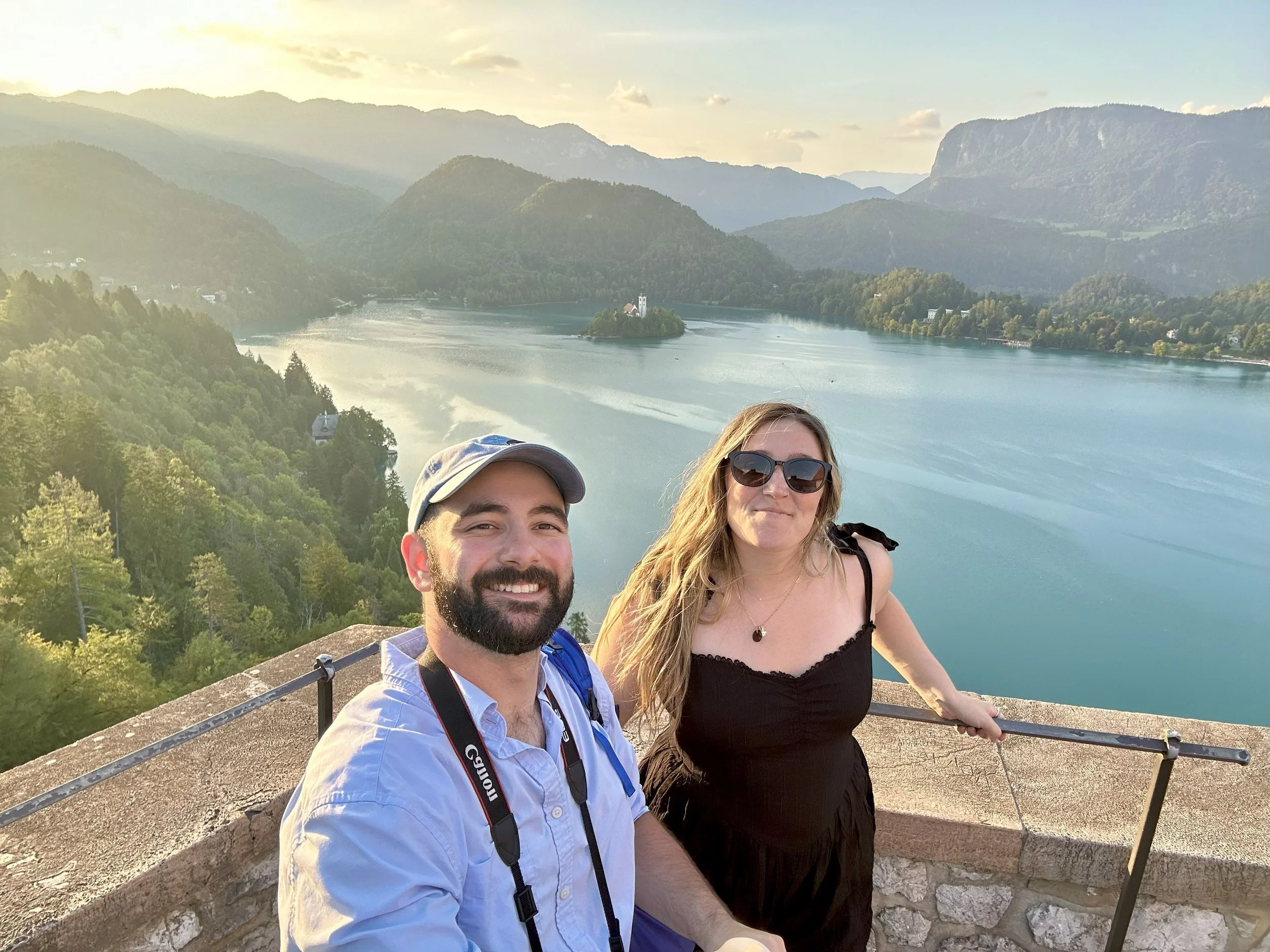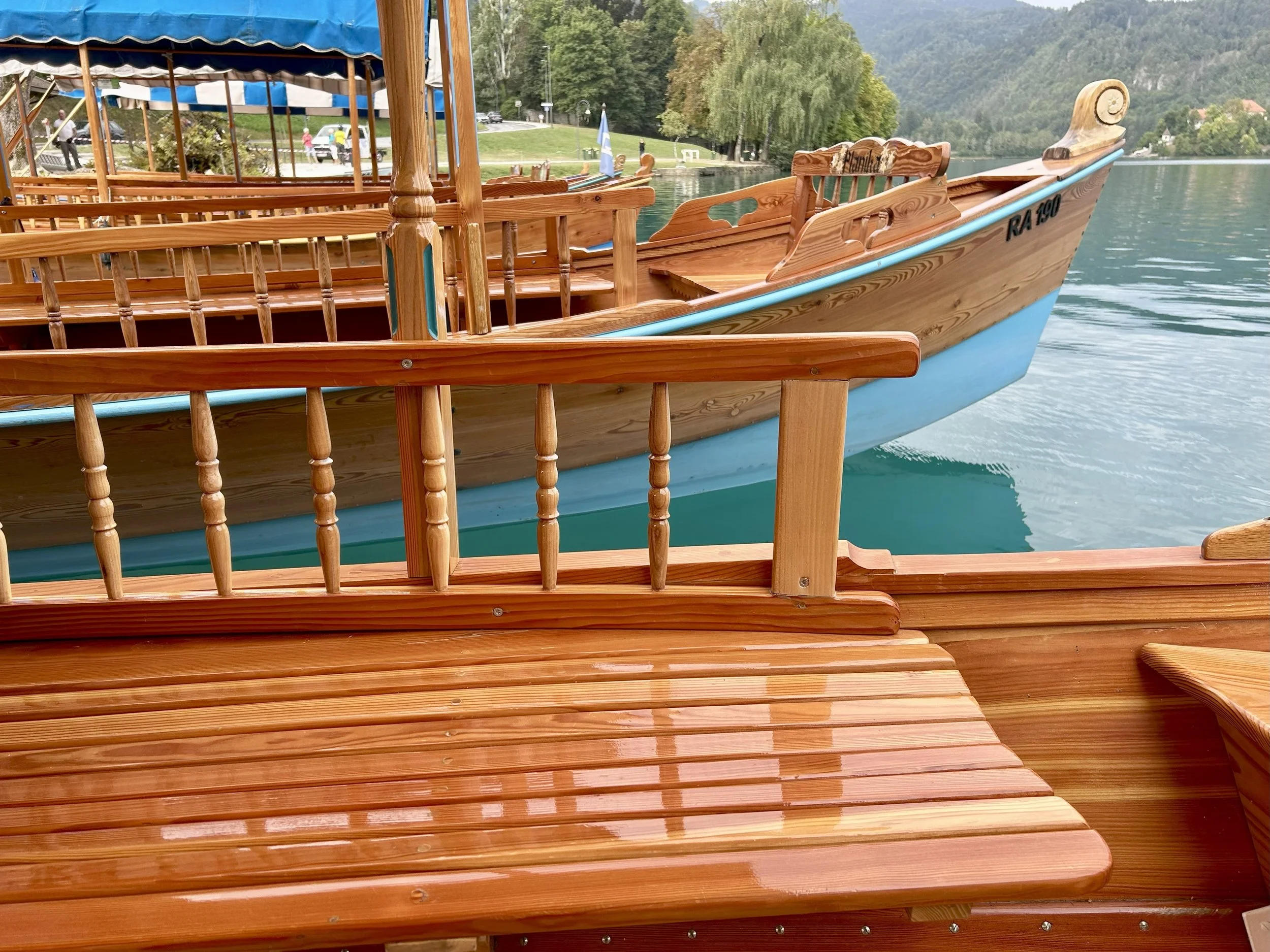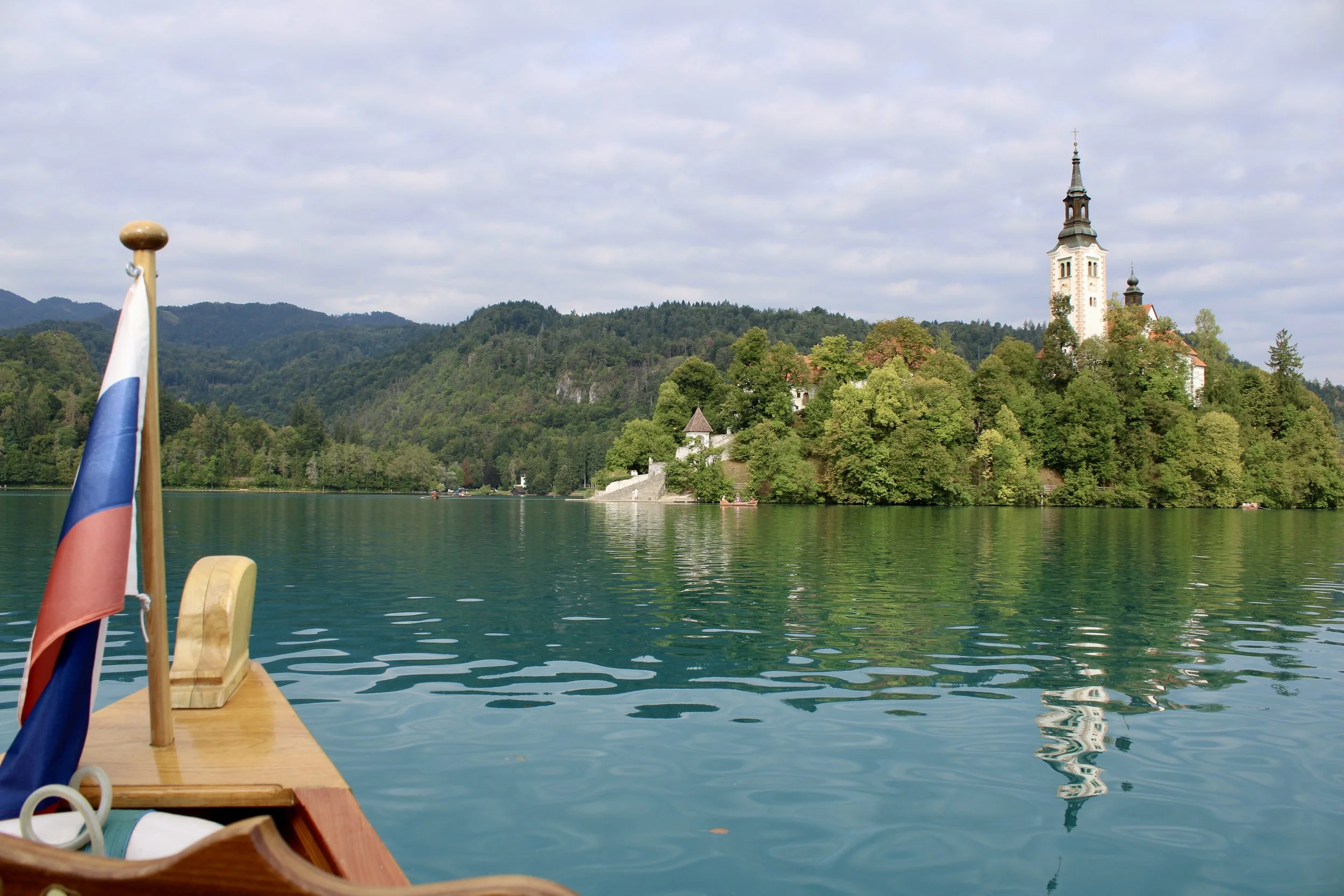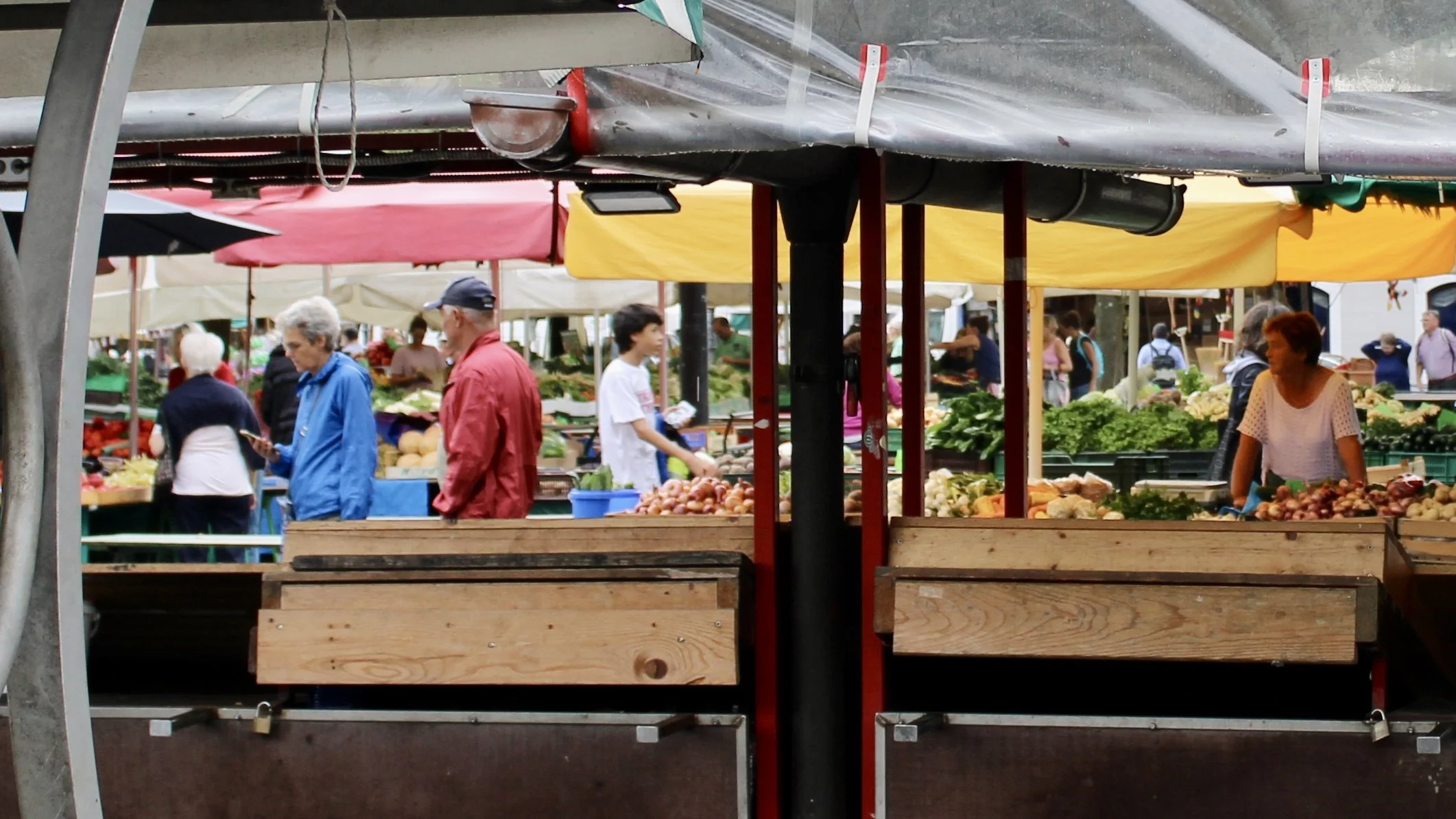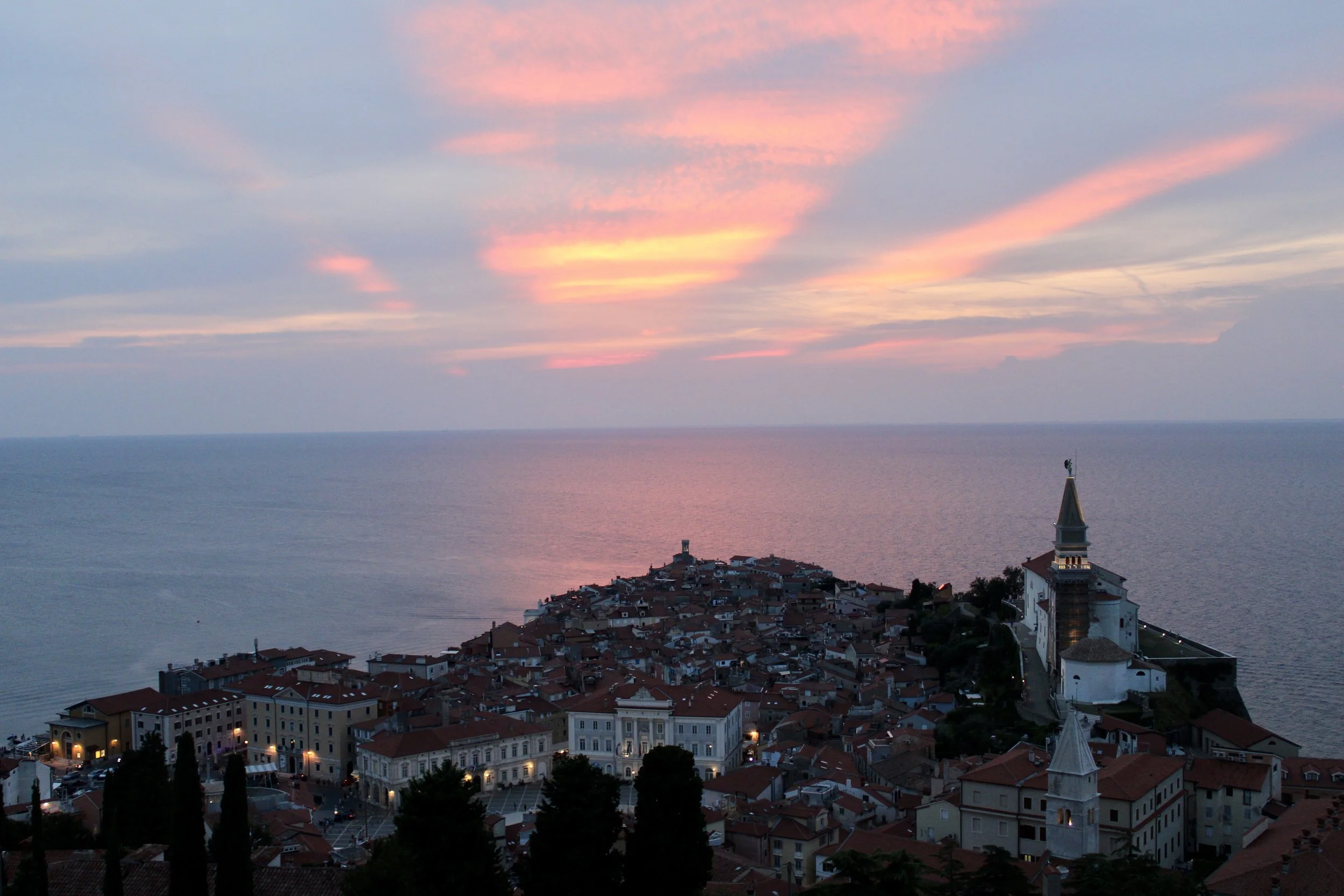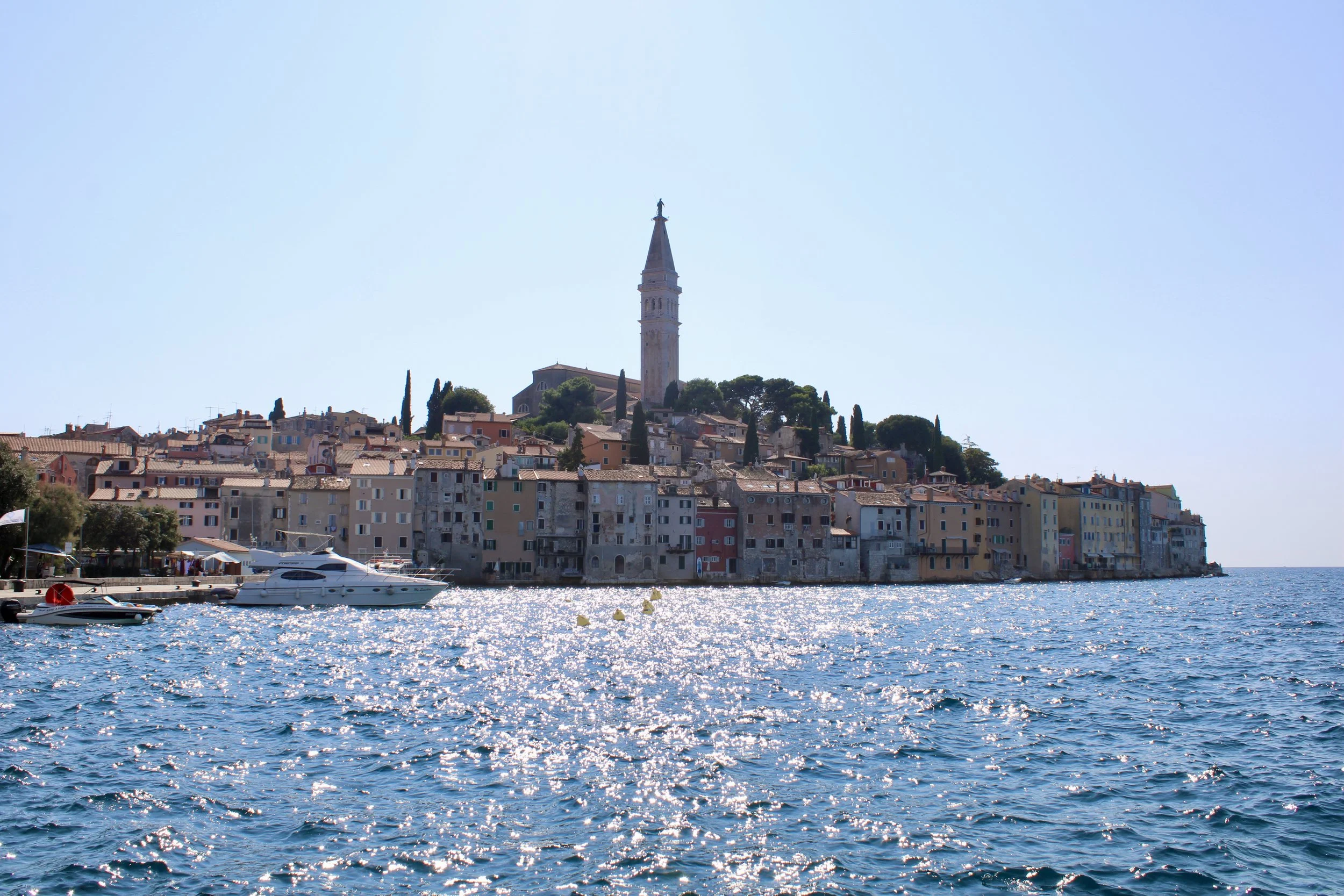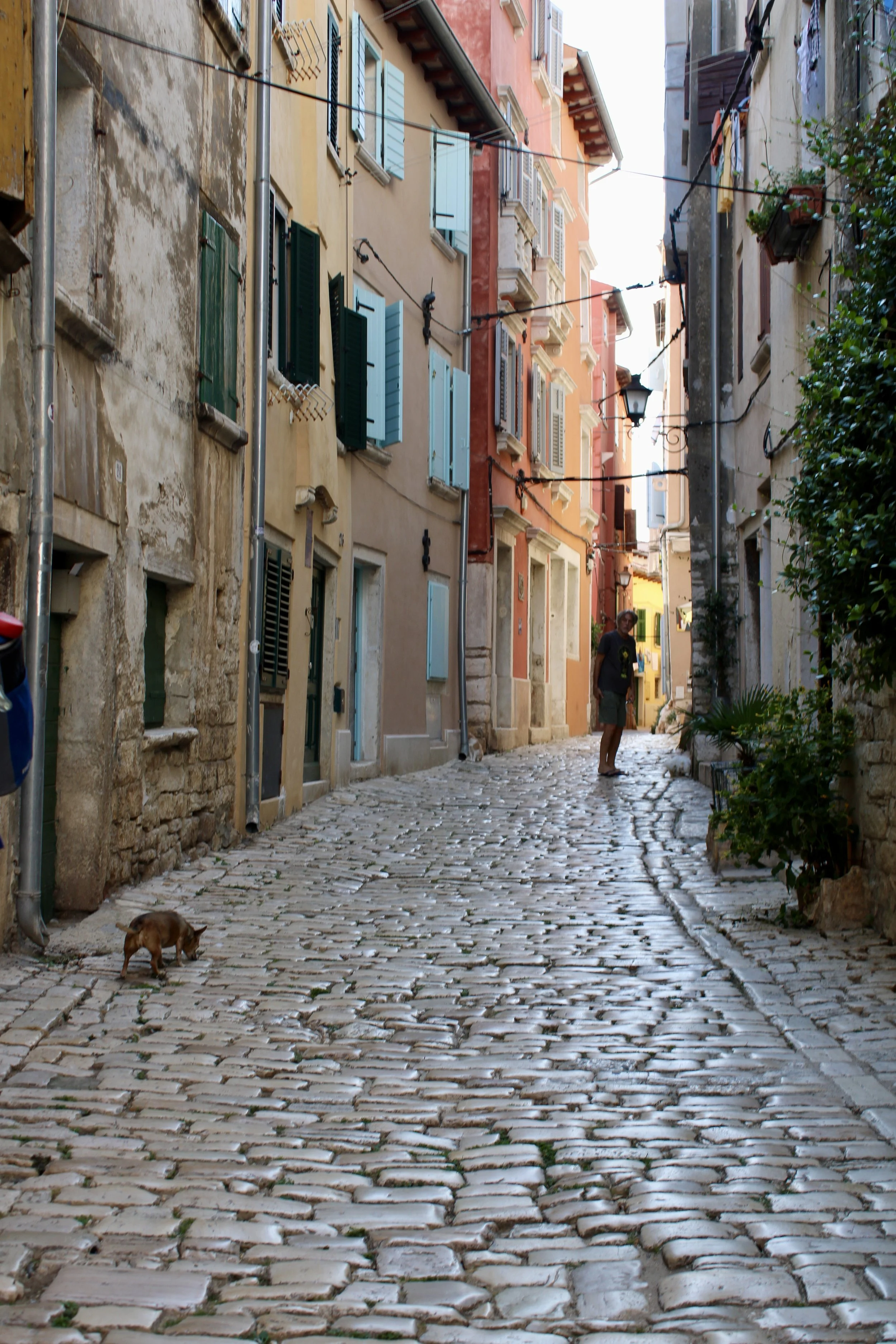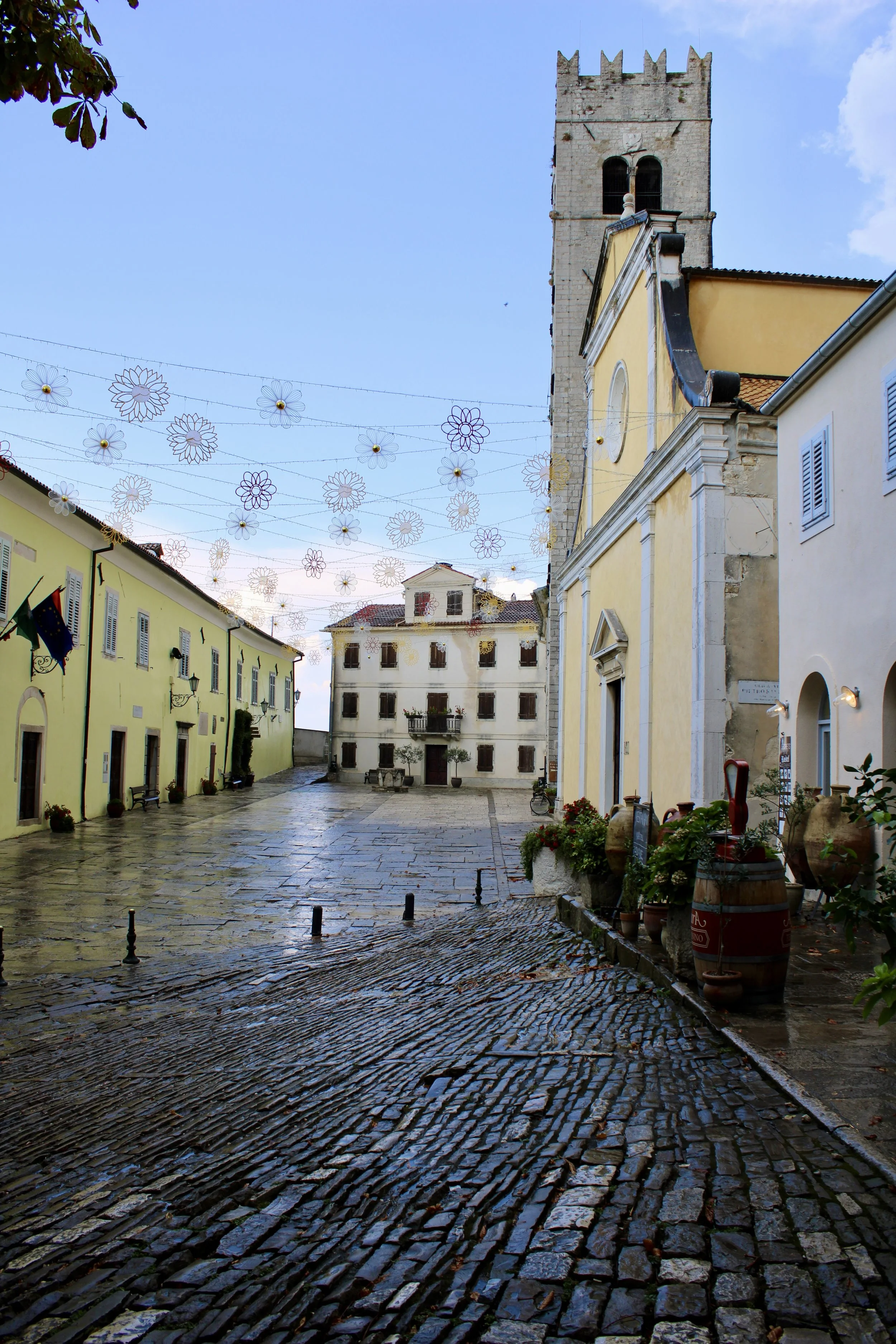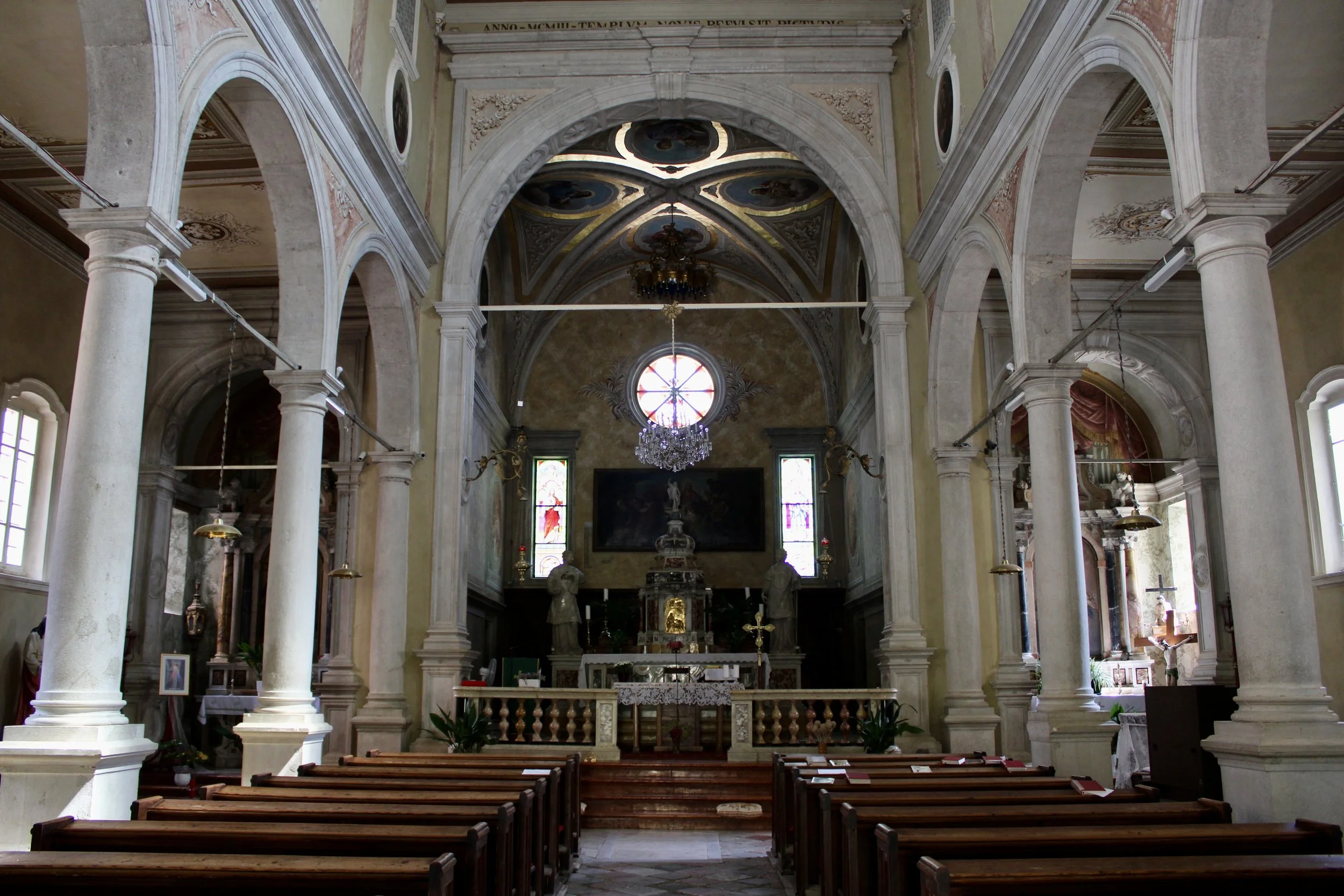Northern Italy, the Dolomites, Slovenia, and Istrian Peninsula
August 14 to August 30, 2024
Pre Planning
Ever since our trip to Switzerland and Italy in 2021, my wife and I had been dreaming of two things: the feel of Italy and the dramatic rise of the Alps. So this time, it made perfect sense to fly back into Milan, the same airport we left from on that last trip, and pick up where we left off.
The plan was to head east to Lake Garda and Verona, then into the Dolomites, hiking and eating our way from west to east. From there, we’d cross into Slovenia, base ourselves somewhere under Triglav, and explore the Julian Alps. After that, we’d make our way to the coast, stopping in Ljubljana before reaching the old Venetian port of Piran. From there, we’d day trip into Croatia’s Istrian Peninsula, visit hill towns, caves, and coastal cities, then fly out of Venice.
One theme that ran quietly through the trip was World War I. Much of our route followed what had once been the front line between Italy and Austria. When you’re standing in those mountains, it's wild to imagine artillery booming from ridge to ridge, and soldiers camped out in what are now hiking trails.
Day 0: JFK to Milan
We flew out of JFK. Strangely enough, it was cheaper to rent a car one-way from Pittsfield and return it at the airport than it was to drive and park our own car. So we rented one. I picked the manager’s special because it was the cheapest option and lucked out, it was a Mercedes. We drove to JFK, dropped it off, and made our way to the gate for our overnight flight.
Day 1: Arrival in Italy – Sirmione, Lake Garda
We landed at Milan Malpensa (MXP), grabbed our rental car, and headed straight to Sirmione, our first base. We picked it because it’s close to the airport, sits on a beautiful peninsula on Lake Garda, and has a charming old town with Roman ruins, a castle, and thermal spas. It’s also only an hour from Verona, which was high on our list.
We had no idea when we planned it, but we had arrived on the Feast of the Assumption, a major holiday in Italy. That meant traffic was heavy, and cars weren’t allowed inside the old town. For that day only, we had to park outside the walls and take a shuttle to the hotel.
Once we checked in, our goal was to stay awake until the evening to fight off jet lag. We headed out to explore. The village was packed with holiday crowds, but it was lively and beautiful. We hopped on the little tourist train (Trenino) that loops to the northern beaches. The rocky shore was cool to see but slippery and pretty crowded, so we didn’t stay long.
Instead, we walked to the Grotte di Catullo, the ruins of an old Roman villa that sits above the lake. The ruins were sprawling and quiet, with views out over the water. Moments like that always hit me, how old everything is, and how short American history feels by comparison.
After that, we wandered the narrow streets of the old town, grabbed our first gelato of the trip, and sat in front of Scaliger Castle while we ate it. Eventually, we found a pizza place for dinner, and by then we were crashing hard. We went to bed early, completely wiped.
In the middle of the night, we were woken up by fireworks. It was still the Assumption holiday, and the whole town seemed to be celebrating. We were half-asleep, but smiling. It felt like the perfect welcome to our trip.
Day 2: Verona + Thermal Spa in Sirmione
We shook off the jet lag and got a solid start on the day. The plan was to spend it in Verona and make it back to Sirmione for an evening at the thermal spa. We drove an hour and parked near Piazza Bra, then set out on foot into the fair city of Verona.
We passed the Arena, walked down Via Giuseppe Mazzini, and landed in Piazza delle Erbe. We had Verona Cards, which gave us access to a bunch of the sites, so we kicked things off by climbing the Torre dei Lamberti. The views were incredible, and the breeze up top felt great. Afterward, we wandered through the Galleria d'Arte Moderna. The art was beautiful, but honestly, the air conditioning after that climb might’ve been the real highlight.
We wound our way through the city, stopping for gelato, Piazza dei Signori, and a quick look at Juliet’s House. We didn’t linger, just long enough to snap a photo of a stranger on the balcony and promise we’d say it was Juliet.
The Basilica di Santa Anastasia looked impressive from the outside, but we decided to go inside the Duomo instead. It’s a modest but elegant cathedral with a great archaeological section where you can see Roman ruins beneath the floors. From there, we crossed the river and took the funicular up to Castel San Pietro. At the top, we had one of those “can you believe we’re here?” moments.
We walked back through town, checked out the Arena one last time, and drove back to Sirmione. After a shower and quick reset, we headed to Aquaria Thermal Spa. We had massage reservations, which came with access to the lakeside thermal pools. It was amazing. Exactly what we needed after the last couple of days. We stayed through the sunset with wine and a charcuterie board, floating in warm water as the lake turned gold.
Day 3: Into the Dolomites via Bolzano
We checked out of Sirmione and ended up behind a funeral procession on our way out. It was quiet and slow, but strangely beautiful. Bells echoed through the narrow streets, the sun hit the old stone buildings just right, and for a moment everything felt still.
Then we hit the highway and drove north. The landscape changed fast. One moment we were in the lowlands, the next we were surrounded by mountains and Tyrolean rooftops. Bolzano made it clear we weren’t in southern Italy anymore. The city square, Waltherplatz, was full of Austrian influence.
We came to see Ötzi the Iceman at the South Tyrol Archaeological Museum. You don’t just learn about him, you see the actual mummy. The fact that he was murdered over 5,000 years ago and preserved in ice still blows my mind.
After exploring Bolzano, we drove to our next base in Chiusa (Klausen). After checking in and catching our breath, we decided not to waste the day. We headed to Santa Maddalena and did a short hike to that iconic viewpoint with the tiny church and the Odle peaks behind it. The scene was stunning. We took photos for a French couple, then got hit with a perfect little rainbow on the way back. Dinner that night at Torgglkeller was one of the best of the trip. Dumplings and pork ribs. Absolute joy.
August 18: Seceda and Monastero di Sabiona
We spent the morning hiking along the Seceda ridgeline. We took the cable car up from Ortisei and were immediately surrounded by wide, jaw-dropping views. The jagged Fermeda peaks rose sharply in front of us, and green meadows dropped off into deep valleys on either side. The trail followed the crest of the ridge, gently winding up and down, with every step offering a new angle on the mountains. It felt peaceful and surreal, like we were walking on the spine of the Dolomites. We stopped at a rifugio for hot chocolate, sat outside for a while, and just watched the clouds roll across the peaks. When it started to rain, we made our way back down.
Later in the day, the sun came out, so we explored Klausen. It’s a beautiful little village with colorful buildings, narrow alleys, and a quiet charm. Above it sits the Monastero di Sabiona, perched on a rocky hilltop that’s impossible to miss. From a path behind our hotel, we climbed up the old stone steps that led through terraced vineyards and shady patches of forest. The hike up was steep but manageable, with views that kept getting better the higher we went.
At the top, the monastery felt completely removed from the world. The buildings were centuries old, with thick walls, arched doorways, and small windows looking out over the valley. There were signs explaining the history of the site, which has been a place of Christian pilgrimage for over a thousand years. Inside the gates, it was quiet and still, with a small church, a courtyard garden, and a sense of solitude that made it easy to imagine why monks would choose to live here. The views from the top stretched over Klausen and into the surrounding valleys, where the vineyards clung to the hillsides in tight rows. It was the kind of place that made you want to slow down and just take it all in.
August 19: E-biking Alpe di Siusi
We rented e-bikes and spent the day riding all over Alpe di Siusi. The views were wide open and absolutely breathtaking. Rolling green meadows stretched out in every direction, with wildflowers along the trails and cows wandering freely, their bells echoing through the air. The mountains felt close and towering, and the whole plateau had this calm, elevated feeling like we had entered another world. You could head in any direction and find something beautiful.
After all the research and planning, seeing the Schlern, Sassopiatto, and Sassolungo up close felt unreal. The scale of them, the pale stone against the sky, and the way they shifted as we rode made it feel like the landscape was alive. Looking north and east across the valleys and distant peaks made the whole experience even more incredible. It was a dream come true.
We stopped at a rifugio for lunch and sat outside with an incredible view. The spätzle and polenta were rich and satisfying, exactly the kind of meal you want in the middle of a mountain ride. On the way back, we stopped in Kastelruth, a quiet alpine town with cobblestone streets, painted buildings, and flower boxes hanging from nearly every window. We walked around for a while before heading home, still buzzing from the day.
August 20: Cinque Torri & Arrival at Tre Croci
We checked out of our beloved Hotel Schmuckhof and made our way to the eastern side of the Dolomites. The drive took us through Gardena Pass, Sella Pass, and Pordoi Pass. Each one had massive mountain views, winding roads, and plenty of places to pull over and just take it all in. It felt like every turn gave us something new to look at.
We stopped to hike around Cinque Torri, which was awesome. The rock formations are massive, these towering stacks rising straight out of the earth. We saw climbers scaling the faces of the towers, roped in and inching their way up. The trails wound through alpine meadows and rocky outcrops, a solid mix of scenic and just tough enough to keep things interesting.
The open-air World War I museum is built right into the trails. We hiked through it without needing to detour. There were restored trenches, tunnels, and old lookout points tucked into the hillsides. Standing in those narrow trenches and looking out at the same mountains soldiers once faced was wild. It’s hard to wrap your head around what it must have been like, fighting up there with artillery fire echoing through the valleys. The mix of beauty and history made the whole place hit harder.
After that, we headed into Cortina d’Ampezzo and took the cable car up Tofana di Mezzo. At the top, the air felt thinner and honestly we were so high up it was like looking out of a plane widow. Jagged peaks in every direction, valleys dropping off far below. We met a guy who had actually climbed up from the bottom, which seemed nuts but impressive. Eventually, we made it to our hotel at Passo Tre Croci, which is tucked right near a bunch of great hiking trails. We relaxed that night and got to bed early so we’d be ready for a big day tomorrow.
August 21: Lago di Sorapis
We got up early to beat the crowds to Lago di Sorapis, one of those Instagram-famous hikes that’s way harder than people think. It’s about 8 miles round trip, no bathrooms, and limited parking. But we planned well, and it paid off. The hike itself was a bit challenging and technical at times, but we had be training for these hikes all year. The lake is a surreal milky turquoise, ringed by peaks. We could even see Tre Cime in the distance. Being able to accomplish this hike was such an incredible reward for all the preparation. On our way out it became clear how overcrowded this hike gets. A queue had formed that extended over a mile, and places where the trail was a narrow ledge were actually quite risky to traverse. Over hearing some conversations in the queue, people drove all the way up from Venice that morning, which is a 3 hour drive, and they were questioning whether they should just head back to Venice without finishing the hike. Insanity.
The trail itself was challenging in spots, with some narrow ledges and cables bolted into the rock. But we had been training for hikes like this, and we felt strong and ready. The views along the way were incredible. Huge limestone walls, alpine meadows, and dramatic glimpses of the peaks in the distance. As we got closer to the lake, the landscape opened up into a wide rocky basin. Then, suddenly, there it was.
Lago di Sorapis didn’t disappoint. The water was a surreal shade of milky turquoise, almost glowing in the light, surrounded by craggy spires. It looked like Gatorade. We could even spot Tre Cime off in the distance, staring at us across the valleys. Just being there, after all the prep and effort, felt like a huge reward.
We finished the hike early, got some rest, then went over to Lake Misurina in the evening for a sunset stroll and dinner.
August 22: Tre Cime + Cadini di Misurina
We got to Rifugio Auronzo early to grab parking, had breakfast there, and started our hike to Cadini di Misurina. The clouds were too thick to see anything, it was even hard to keep track of the trail. It was a little disheartening, but we decided to head over to begin the hike around Tre Cime anyway. The full loop around Tre Cime di Lavaredo is one of the most iconic spots in the Dolomites, and honestly, it lived up to every bit of the hype. As we walked, the clouds began to break. The mist drifting around the peaks made it feel more magical than if it had been clear. The views were absolutely unreal. These three jagged limestone peaks shoot straight up from the landscape, like ancient towers carved by giants. The trail took us all the way around them, giving us every possible angle. On the south side, we hiked below the towers through a wide open grass field scattered with massive limestone chunks. It felt surreal—like we were walking through some lost world.
What made it even more powerful was realizing this place was once a World War I battlefield. There are bunkers, tunnels, and remnants all along the trail, and it really hits you just how brutal it must’ve been for soldiers up here. WE took a moment to really appreciate Monte Paterno, where Innerkofler, the famous Austrian mountaineer turned soldier, died in combat. Standing there, it was hard to imagine the mix of natural beauty and violent history that defines this region.
We decided not to push all the way to Innerkofler, but we did loop the valley and stop at Rifugio Malga Langalm for espresso with a front-row view of the towers. Later in the afternoon, I ran back out to Cadini di Misurina for one more look. The clouds had lifted a little, but the peaks were still playing hide and seek. Another reason to come back.
August 23: Into Slovenia – Mangart and Bovec
We said goodbye to the Dolomites and drove east. The landscape began to feel quieter, more authentic, like we had drifted beyond the reach of the typical adventure tourist. In Tolmezzo, we stopped at a local grocery store for picnic supplies. Grapes, chocolate, bread. Nothing fancy, but it felt perfect. Walking through the aisles, surrounded by everyday life, we felt more like travelers than tourists. Less like we were chasing destinations and more like we were simply in a place. It was refreshing.
Then we stumbled upon Lago del Predil. It wasn’t even on our itinerary. One turn in the road and suddenly there it was, a brilliant green-blue lake surrounded by dense forest and steep peaks. There were barely any people around. It felt like a secret kept by those who live nearby. We pulled over and just stood there, taking it in.
As we approached the Slovenian border, the mountains seemed to shift in character. There was a sense of transition, not just geographically but atmospherically. The road narrowed, the forest thickened, and it almost felt like we were entering another dimension, unseen and unnoticed. The towering peaks of Triglav National Park greeted us on the other side, wild and rugged.
We began the ascent to Mangart Saddle on a winding, narrow mountain road carved into the cliffs. The drive itself was a thrill. Tight switchbacks, steep drops, and views that just kept opening wider. At the top, the world fell away. We hiked around the saddle, standing between Italy and Slovenia, staring out at ridgelines in every direction. Far below, Lago del Predil now looked like a tiny sapphire puddle in a sea of green. We found a spot to sit and laid out our picnic. Grapes, chocolate, and fresh mountain air. It might have been the simplest meal of our trip, but it’s the one that comes to mind first.
Eventually we descended into the Soča Valley and continued on to Bovec. The town welcomed us with soft light and an easy kind of happiness. After a delicious dinner, we wandered into the square. It was dimly lit, just enough to cast a glow over people gathered at tables, drinking, laughing, clinking glasses. The warm air carried the sound of it all like a lullaby. It felt like everyone there was exactly where they wanted to be. So were we.
August 24: Soča River + Kolovrat WWI Site
That morning, we kayaked the Soča River. The water was that unreal emerald blue, so clear it looked lit from within. Even in August, it was freezing, but the wetsuits made it not just tolerable but fun. We had an incredible guide who made it all the more encouraging. Falling in actually felt refreshing. The river carried us past waterfalls and cliffs, through quiet forested stretches where we just drifted and took in the wilderness around us. Sometimes it was thrilling, bouncing through small rapids. Other times, it was totally still, and we just floated under the shadow of Triglav, surrounded by green and stone and sky. It was the kind of experience that resets something inside you.
Back in Bovec, we wandered the streets, feeling damp from the river, but drying in the sun. We stopped for ice cream and shared it with a few persistent bees. We grabbed a quick lunch from a food stand. Fried polenta with sour cream. Crispy, salty, simple, and perfect. The town was full of life without being crowded. People were riding bikes, dogs dozed in the sun, and friends greeted each other by name.
In the afternoon, we drove over to Kobarid to visit the WWI Museum. Kobarid, known as Caporetto to the Italians, was the site of one of Italy’s worst military defeats. The museum sits quietly in the middle of town, but what it contains is powerful. The exhibits focus on life along the Isonzo Front, which is now the Soča River, and how the mountainous terrain shaped the war. There were photographs of young soldiers in snow-covered trenches, letters home, and rusted helmets recovered from the slopes. We sat in on a presentation in German about the Battle of Caporetto. Even without understanding all the words, the visuals made everything clear. The scale of it, the suddenness of the collapse, the desperation on the mountain tops and in the valleys.
Afterward, we drove up the steep, winding road to Kolovrat Ridge. It climbs through tight curves and dense woods until it opens to a sweeping view of Italy on one side and Slovenia on the other. At the top, we parked and walked the restored trenches. In the sunlight, they looked like long grassy scars stretching across the ridgeline. Some were deep and narrow, with moss-covered stone walls and bunkers carved into the hillside. You could walk right through them. The entire Soca (Isonzo) Front in Slovenia has been turned into Pot Miru, “the Walk of Peace.” It’s a trail network that runs from the Dolomites to the Adriatic and connects these historical sites, keeping the memory alive.
Standing there, you could almost see it happen. Artillery hammering the slopes, gas rolling through the valleys, soldiers climbing over the ridge under fire. It felt close, not like a story from a hundred years ago, but something that still lives in the ground. Being there made the history feel personal. It was humbling and heavy and unforgettable.
8/25/24: Vršič Pass & Bled Castle
We checked out of Bovec and began our drive through the Vršič Pass, one of the most scenic roads in Slovenia. The route winds steeply through the Julian Alps, with hairpin turns and views that widen with every climb. Our first stop was the Great Soča Gorge. Even after all we had seen, the river still stunned us with its color, that glowing emerald blue. The gorge itself is narrow and dramatic, carved deep into limestone, with the water rushing through like liquid glass. In the thicker parts of the forest, the river spills into a calm, clear pool. It’s a popular swimming spot, and we spent some time just sitting by the edge, dipping our feet into the icy water and watching a few brave souls dive from the rocks above. Everything felt so alive there, and yet so peaceful.
We kept climbing toward the pass and stopped at the Triglav National Park Visitor Center for some surprisingly good pizza. Just beyond that, we pulled over for a short hike that opened up views in both directions, toward Austria on one side, and toward Italy on the other. It was one of those rare moments where you could look out over three countries in a single turn of your head. Along the trail, we passed a rock wall where the outline of a woman’s face appears naturally in the stone. According to local legend, it’s “The Pagan Girl,” a sorrowful figure said to cry for her people. A little farther along we came across a World War I anti-aircraft bunker, one of the earliest of its kind. Just seeing it tucked into the alpine landscape made you think of how wild and advanced that front of the war really was.
When we got back to the car, we realized how lucky we’d been. A massive herd of sheep had wandered over and were now lounging in the shade around the parked cars. Ours was just outside the circle. A few drivers were stuck, waiting for the sheep to move, while others just laughed. It was one of those only-in-Slovenia moments that made the day feel even more special.
From there, we descended out of the mountains and headed to Lake Bled. This is Slovenia’s most famous tourist destination, and we felt the change immediately. After checking into our hotel, we headed up to Bled Castle, which sits high on a cliff above the lake. The view from up there during golden hour was something else. The water below turned every shade of blue, the little island church lit softly in the middle, and the surrounding mountains were cast in that perfect, fading light. The exhibits inside the castle were simple, and most were already closing by the time we arrived, but we didn’t mind. We just lingered for a while, soaking in the view, then headed into town for dinner before calling it a night.
8/26/24: Lake Bled
The lake was glassy and still in the morning, with that gradient blue hue that looks fake until you’re standing there. We took a traditional Pletna boat out to the island and visited the Church of the Assumption. We rang the bell and climbed the tower, then returned to shore and hiked up to the classic viewpoint where you can see the island and the castle in one frame. After that, we drove over to Vintgar Gorge. It was beautiful but something I missed in planning was that the boardwalk hike is one-way and you have to walk 3 or so miles back. After everything else we’d done on this trip, we were totally wiped. We grabbed McDonald’s and brought it back to the hotel room, which felt amazing. Later we checked out the hotel’s pools and saunas, which were exactly what we needed.
Honestly, Lake Bled felt kind of overhyped and overcrowded. This was one of the only “what ifs” of the trip. What if we had stayed in Lake Bohinj instead? It's known to be just as beautiful, but with fewer crowds. Even just spending more time in Bovec could’ve been a better choice. That area had its own gorges, hikes, and WWI history. We mostly picked Bled for logistical reasons, and it does have nice attractions, but they’re a bit too touristy and overpriced. Food for thought and reasons to return.
8/27/24: Ljubljana, Predjama, and Piran
We left Bled and headed to Ljubljana. It was raining and our energy was a little low. We still explored the castle, enjoyed the tower views and a few exhibits, but most of the rooms were kind of basic. Afterward, we wandered the old town, which was more charming and lively. As far as capital cities go, this was a small but personable one. We bought some honey, and saw the Triple Bridge and the pink Franciscan Church, it was a nice stop.
From Ljubljana, we drove south toward the coast, stopping at Predjama Castle along the way. This place was much more our speed. Built dramatically into the side of a sheer cliff, the castle looked like something out of a fantasy novel. Its architecture felt raw and powerful. Walking through its winding corridors and cave-like passages gave a real sense of what life might’ve been like for the people who once lived and fought there. After the more polished, crowded stops earlier in the day, it felt amazing to be back in the quiet countryside, surrounded by rolling hills and forests. We felt grounded again.
We continued on to our last base of the trip, Piran. The Venetian influence was everywhere. Tartini Square was alive with music and restaurants. We climbed the bell tower for views over the rooftops and the Adriatic. Then we walked across town and climbed the city walls just in time for sunset. The sky turned a fiery orange-pink, and sailboats dotted the water. It felt like we’d entered a different world from where we’d been the past two weeks.
8/28/24: Pula and Rovinj
We took a day trip from Piran into Croatia’s Istrian Peninsula, starting with the city of Pula. The Roman arena there was unbelievably well preserved, rising up in the middle of town like it had always been part of the landscape. We walked around inside, imagining the noise and energy of ancient crowds, the sun beating down just like it was that day. Afterward, we wandered through Pula’s old town, stopping to admire the Arch of the Sergii and the Temple of Augustus, both framed by lively squares and a mix of locals and visitors going about their day. It was the kind of place where ancient history and everyday life exist side by side. We ducked into a few shops, grabbed cold drinks, and enjoyed just moving slowly through the city.
From there we drove to Rovinj, which immediately felt more Venetian. The town climbs gently along a peninsula, its narrow streets paved in polished limestone and flanked by colorful houses with green shutters and laundry lines. It felt like walking through a painting. Every turn led to something beautiful, a tucked-away courtyard, a sudden view of the sea, a bell tower rising above it all. We wandered for a long time, just letting the town unfold around us.
Eventually, we found a spot by the rocky shoreline and went for a swim. The water was cool and clear, and the sun was beginning its slow descent. We laid out on the warm rocks, letting time stretch out for a little while. On our drive back to Piran, the light was soft and golden. By the time we returned, the town had gathered again at the shoreline for another sunset. We joined them, quietly taking our place among strangers, everyone looking out over the water. The sea glowed with pink and orange and gold, sailboats drifting in the distance. It felt like the whole day had been leading to that moment.
8/29/24: Škocjan Cave and Motovun
Our last full day began with a tour of the Škocjan Caves, and they completely lived up to their reputation. This wasn’t a cave walk, it was a descent into something ancient and awe-inspiring. The chambers were massive, with towering formations that seemed to grow out of the earth itself. At one point, we crossed a bridge suspended high above an underground river, the sound of rushing water echoing up from below. Our guide was fantastic, offering insight into the early explorers who first ventured into the system with rope ladders and candlelight, mapping it bit by bit. It was impossible not to feel small in there, in the best possible way.
After the caves, we crossed back into Croatia and made our way through the rolling hills of Istria. The roads wound through vineyards and groves, every curve revealing another postcard scene. As we approached Motovun, we saw it rising in the distance, an old hilltop town layered in stone, standing watch over the surrounding valley.
Once we parked, we wandered slowly through the town’s narrow cobbled streets, stopping in little shops and peeking through archways. The buildings were weathered in the best way, with ivy creeping up the walls and flower boxes on every ledge. We made our way up to the main square and sat down for lunch, knowing we had to try the region’s famous truffles. We ordered a pasta dish, shaved generously with truffles, and settled in.
Halfway through the meal, a thunderstorm came out of nowhere. The wind fell hard and fast, and rain, bouncing off the stone, sent people scattering. We moved inside, and when the rain slowed, we decided to venture out, hoping to move between intermittent showers. The air had cooled and everything smelled like wet stone and soil. At one point, we ducked into the Church of St. Stephen just as another wave of rain began. It was empty and quiet, lit only by natural light filtering through the windows. We sat on a bench, listening to the soft roll of rain and distant thunder outside and feeling the warmth still lingering in the stone walls. It felt like the perfect place to pause. A gentle, unplanned ending to a trip that had been full of movement and awe. That moment in the quiet, with the storm just outside, will stay with us for a long time.
That evening, we returned to Piran and watched our final sunset from the balcony. The sky turned soft colors and the sea reflected it all back to us. We sat there eating pizza and chocolate, full of gratitude and already wondering when we’d return.
8/30/24: Departure
We checked out of our hotel and made the quiet drive to the Venice airport. The car was filled with that familiar post-trip feeling: tired but content. Replaying moments in our heads and trying to hold onto the last bits of adventure. As we crossed the border back into Italy and neared the airport, it felt like we were slowly waking up from a vivid dream. It had been two and a half weeks of mountains and ruins, rivers and ridgelines, sunsets and storybook towns. And now it was time to go home. Grateful, changed, and already planning the next one.






























